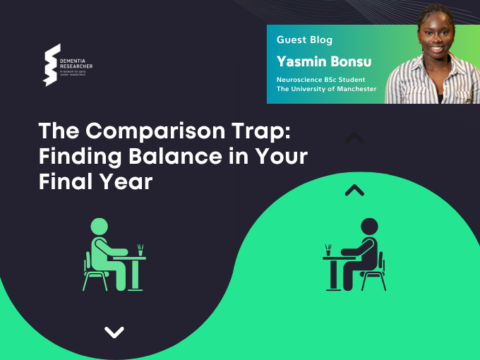This is going to be a series of writing exercises, hints and tips for everyone starting out on their first paper, grant or project report. Like the title, I am also going to err on the side of patronising. Because it’s much more pro-forma than my previous blogs I’m going to have subtitles to help you navigate. So this blog is perfect for anyone new to academic writing, or anyone who wants to get in the mindset for their new piece of writing.
To start… don’t Make Assumptions
This is the first and most important message I can say to you. Do not, ever, under any circumstances assume the person reading your work is intelligent. OK, that’s a little unfair so I’ll pare it back. Do not assume that just because you know what you’re talking about, that they do too. You know why it’s exciting and important, but you need to convey that and convey it in an easy and understandable way. One of my favourite sayings is an A. A. Milne Winnie-the-Pooh quote: ‘It is more fun to talk with someone who doesn’t use long, difficult words but rather short, easy words like “What about lunch?”’. And that applies to life as well as science. Let’s take an example:
 Differences in scaling play a key role in the comparison of anatomical venous networks, which can be evidenced via specific analytical metrics that evaluate topological equivalence.
Differences in scaling play a key role in the comparison of anatomical venous networks, which can be evidenced via specific analytical metrics that evaluate topological equivalence.
 Differences in scaling between the vascular networks can be shown using specific tools to measure similarities in shape and form.
Differences in scaling between the vascular networks can be shown using specific tools to measure similarities in shape and form.
Can you see how the second sentence is much easier to understand than the first but still says the same thing? Yes there will be instances where you need to use technical language, it is science after all, but you do not need to surround the technical jargon with ten-dollar words because you think it makes you sound clever. It doesn’t. All it does is make the reader of whatever you’re writing have to read slower and become steadily more annoyed.
Abstracts
These are a relatively easy one to practice. Go and find a random paper, black out the abstract, read the paper and try writing the abstract after you’ve read the paper. It’s a nice exercise for undergraduates but you can easily work your way up to it if the prospect is slightly terrifying for you.
Start by writing a really short summary of the paper. ‘In this paper, Fred and colleagues have used this model to look at something and they found something interesting.’, then work your way up from there. The approach I think works well to start is the intro-methods-results-discussion method. Some journals get you to split your abstract this way so start by actually writing it out like this. Split your text relatively evenly and try and write three or four sentences for each of the sections. You’ll find this works quite well but if you then just merge it all into one big abstract, without the sections split then it becomes slightly clunky and unreadable. Try merging the sections then pruning as you go. This might mean adding linker sentences or phrases, words like ‘therefore’ or ‘thus’ which might not have been necessary in the split version but which make the abstract flow much better.
Abstracts for grants, or the brief introductory paragraph of space they give you, are a little more of a skill. Like a paper abstract they’re space limited so my major tip for these is get to the point quickly. The people reading these are too busy to read 250 words of waffle on why dementia or stroke or whatever is the worlds worst problem and the nuances of why astrocyte activation or carer freedom contribute to that problem. What they want to do is read ‘this is the problem, this is what we’re going to do’. Do not be afraid to leap straight into that, as weird as it’s going to read if it’s the first one you’ve written. I’ll give you an example of one of my recent ones:
Every year 150,000 people suffer a stroke in the UK and, of those who survive, more than 100,000 suffer functional disability. Lack of understanding of the mechanisms of brain cell death after stroke, coupled with a lack of effective translational pipelines from pre-clinical to clinical research, has hampered our ability to develop new therapies. This project aims to study the metabolic changes associated with stroke and seeks to exploit the contribution of the mammalian target of rapamycin (mTOR) pathway to these changes.
Can you see how I’ve gone Sentence 1: here is the magnitude of the problem, Sentence 2: this is why it’s a problem, Sentence 3: this is what I’m going to do about it. You don’t need to know just yet why mTOR is important or what role it plays, we can get to that later. Get the message across quickly so they know what you’re doing and, more importantly, you get their attention.

The most common purpose in academic writing is to explain some idea or research finding and to persuade readers that your explanation or theory is the correct one. In doing so, you may need to describe an object, place, or activity.
Lay Summaries
These are one of my favourite things to write. That makes me sound really sad, but I genuinely enjoy them. It’s a proper skill to be able to write a good lay summary and I am nowhere near a master yet, but I like practicing.
One thing I was told early on by someone-or-other senior, was that when reading grants people will often skip straight to the lay summary to figure out roughly what the project is about in easy words, before going back and reading it all through properly. In many larger applications you’ll not only have to write a summary for a totally lay audience but also a technical summary for an educated ‘non-specialist’.
Again, the first major tip is do not make assumptions. If we start with the lay summary my best tip is to try writing it and then find an actual lay person and get them to read it. If they understand what you wrote then great, you win a gold star. If they don’t then we have a problem. And usually the problems occur because you leapt straight into calling them ‘neurons’ when ‘brain cells’ would have been fine. You said ‘pathology’ when ‘disease’ would have been fine. Think of the simplest way of describing something using the shortest words. Remember, you spend your entire life talking to other people just as smart as you are who know what ‘microglial chemotaxis’ is, but actually the guy who comes to fix your plumbing might not, so say ‘cell movement’ so he understands.
Similarly, with the ‘non-specialist’ summary you can assume they will be a scientist but you can’t assume they’ll be in your field. Someone interested in the liver might not know what an astrocyte is, or why the blood brain barrier is important. Here you can still use terms like ‘astrocyte’ or ‘neuron’ rather than ‘brain cell’ but if they’re something more out of the ordinary go on to explain why you’re looking at them, or why they’re important in a normal brain.
You guys I can assume are all dementia researchers, unless you’re one of those poor people I assault with links to these on a regular basis, so a good exercise is find an area of dementia you don’t currently work in and try and write a lay abstract for the work. You’re a clinical researcher using imaging and memory exercises – go and find some pre-clinical research and practice a lay summary for it. You’re a pre-clinical scientist working on mouse models – go and find a project on identity in the dementia community and write a summary of it.
Methods
I cannot stress this enough: I would like to be able to do your experiment. Please. I want to be able to replicate your science, because we all know reproducibility is a major issue, and for that I need details. I don’t need to read that you ‘incubated the cells with the antibody’. I need to read that you ‘incubated the cells for 2 hours at room temperature with a dilution of 1:100 of an antibody you bought from somewhere I’ve heard of’.
I don’t need every single detail. So, for common techniques like Western blotting you don’t need to take me through every stage and tell me about every single 5-minute wash step. But I need enough detail that I can do exactly what you did in my lab with my own reagents and it should work the same. Or I need to know exactly what type and age of patients you recruited so that if I try the same thing I know whether we can compare our data. And I need enough detail that I can do that without having to email the corresponding author.
Discussion and Conclusion
This will be both a beautiful outline of how to write these and a beautiful conclusion to this mini lecture on how to write things.
The beginning of your discussion should be like a mini abstract but in the past tense. ‘In this paper we discovered something amazing using this super shiny technique’. Then what you need to do is go ahead and discuss that. For very junior researchers this is often a perplexing task and one that is not done well so again, I shall err on the side of patronizing. Discussing it means that you need to take your results in the context of others and draw some conclusions. Try the three-sentence approach: ‘we showed X, Fred also showed X, this proves Y’ or alternatively ‘we showed X, Fred showed Y, this means something’. This is also where you can acknowledge limitations and differences. Perhaps the reason your results and Fred’s results don’t agree is because he used rats and you used mice, or because he used cells and you used rats, or because he looked in men and you looked in women. This is the kind of things a discussion is meant to highlight.
Conclusions are where you are allowed to let your hair down a little. I have previous supervisors who are extremely exuberant and every paper they’ve ever written has the next therapy for some disease in it. I’m a little more reticent but this is where you are allowed to say things like ‘this has the potential to be a new therapy’ or ‘this could change the way we diagnose this disease’. Be a little bold and conclude with something exciting.
Sadly I can’t do that here.
If you enjoyed this blog, you may also enjoy this webinar delivered by Dr Clare Jonas – Academic Writing for Different Audiences.

Dr Yvonne Couch
Author
Dr Yvonne Couch is an Alzheimer’s Research UK Fellow at the University of Oxford. Yvonne studies the role of extracellular vesicles and their role in changing the function of the vasculature after stroke, aiming to discover why the prevalence of dementia after stroke is three times higher than the average. It is her passion for problem solving and love of science that drives her, in advancing our knowledge of disease. Yvonne has joined the team of staff bloggers at Dementia Researcher, and will be writing about her work and life as she takes a new road into independent research.

 Print This Post
Print This Post




